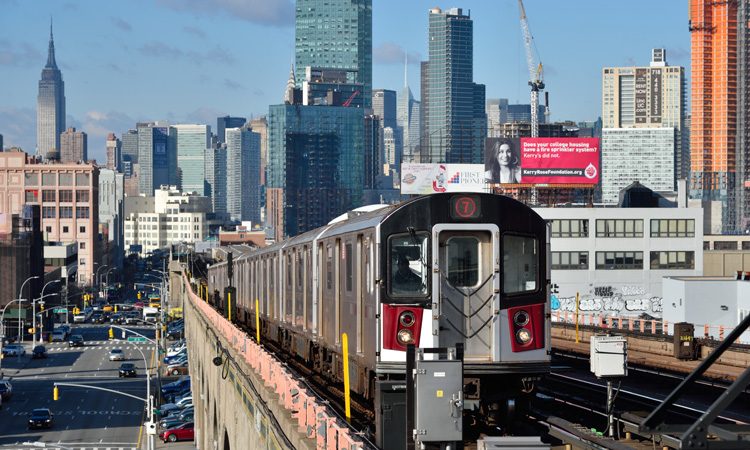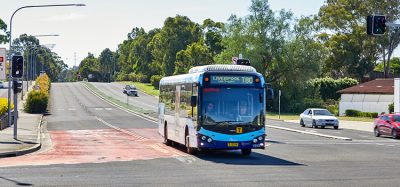MTA ridership increases as on-time performance improves
- Like
- Digg
- Del
- Tumblr
- VKontakte
- Buffer
- Love This
- Odnoklassniki
- Meneame
- Blogger
- Amazon
- Yahoo Mail
- Gmail
- AOL
- Newsvine
- HackerNews
- Evernote
- MySpace
- Mail.ru
- Viadeo
- Line
- Comments
- Yummly
- SMS
- Viber
- Telegram
- Subscribe
- Skype
- Facebook Messenger
- Kakao
- LiveJournal
- Yammer
- Edgar
- Fintel
- Mix
- Instapaper
- Copy Link
Posted: 23 October 2019 | Intelligent Transport
Figures reveal that MTA ridership has increased across subways, buses, LIRR and Metro-North, with on-time performance improving across the board.


The New York Metropolitan Transportation Authority (MTA) has announced figures that show ridership increases on subways, buses, Long Island Rail Road and Metro-North Railroad.
Average weekday ridership on the subway in September 2019 was up 4.5 per cent over the prior year to 5.77 million, while local bus ridership of 2.25 million represents a 1.5 per cent increase over the previous year. Long Island Rail Road ridership increased 2 per cent in September 2019, boosting year-to-date ridership by 2.4 per cent.
Metro-North Railroad’s ridership increased 1 per cent in September 2019 and has risen 0.6 per cent year-to-date. Despite the increase in ridership across mass transit modes, traffic on MTA bridges and tunnels also rose to be 0.6 per cent higher than the prior year in August.
The subway system is carrying nearly 250,000 more trips each weekday than it was a year earlier, while buses are carrying 34,000 more trips per average weekday. The MTA’s commuter railroads together have carried nearly 2 million more people in 2019 through September.
“These numbers are the result of a tremendous amount of hard work and dedication,” said MTA Chairman, Patrick J. Foye. “The MTA’s top priority is increasing the reliability of the system and our workforce has been focused on identifying and fixing track defects, fixing signals and switches, and overhauling train cars and buses at a faster rate than at any time in memory. We are also rethinking how we communicate with our customers – and as a result of all of these improvements it is clear New Yorkers are taking notice.”
New York City Transit
Weekday subway on-time performance was 82.7 per cent in September 2019 – the fourth month that is has been above 80 per cent in five years. The SAP, launched by Governor Andrew M. Cuomo and then-MTA Chairman Joe Lhota, has provided a surge of additional union personnel, outside contractors, and new tools and methods for the maintaining and improving the system.
- Subway performance continued its steady improvement in September 2019
- Major incidents have declined to the lowest number since this record has been kept
- On-time performance has continued to improve
- Customer-centric performance numbers pointing higher.
Andy Byford, New York City Transit President, said: “Together, the work of the Save Safe Seconds campaign and the assistance we got from the Subway Action Plan have helped us achieve performance numbers unseen in some time and we look forward to improving our numbers even more in the months ahead.”
Long Island Rail Road
LIRR’s year-to-date on-time performance of 92.6 per cent through September 30 is 2.4 percentage points higher than it was over the same time in 2018. The LIRR has scheduled 1.3 per cent more trains in 2019 through September 30 than it had over that time frame in 2018, yet experienced a 0.4 percentage point increase in trips completed, to 99.4 per cent. Trains operating with fewer cars than their normal length decreased 23.6 per cent and trains’ mechanical reliability increased 7.4 per cent, with trains travelling 193,667 miles between experiencing a mechanical failure as of August 31. Track circuit failures in 2019, have reduced to 42 through September 30, down by a third from 64 during the prior year.
LIRR President, Phil Eng, said: “We remain focused on balancing state of good repair and an unprecedented amount of capital work to expand and modernise our railroad that will provide a better customer experience for this generation, and for generations to come.”
Metro-North Railroad
Metro-North’s year-to-date on-time performance of 94.3 per cent through September 30 is 3.7 percentage points higher than it was over the same time in 2018. Metro-North has scheduled 142 more trains in 2019 through September 30 than it had over that time frame in 2018, yet experienced a 0.3 percentage point increase in trips completed, to 99.8 per cent.
The percentage of trains operating at their full length this year has increased 0.7 percentage points East of Hudson through September 30, to 99.4 per cent, while the improvement West of Hudson was even more pronounced, rising 1.2 percentage points to 98.9 per cent. Trains’ mechanical reliability surged 63 per cent, with trains traveling 244,074 miles between experiencing a mechanical failure, up from 149,683 a year prior. Delays related to switch and signal problems have decreased to 741 through September 30, down by more than half from 1,800 experienced during the prior year.
“Metro-North’s Way Ahead programme is providing a road map for the railroad’s future, where we concentrate on increasing train service safety and reliability,” said Catherine Rinaldi, President of Metro-North Railroad. “These statistics come roughly after our first year of fulfilling the Way Ahead plan, and all signs point to even more improvement going forward. I thank the hard work and dedication of the entire Metro-North workforce for bringing these results.”
Related topics
Business Models, Fleet Management & Maintenance, Journey Planning, Passenger Accessibility, Passenger Experience, Public Transport, Travel & Passenger Information
Related cities
New York
Related organisations
The Metropolitan Transportation Authority (MTA)
Related people
Andy Byford, Catherine Rinaldi, Governor Andrew Cuomo, Joe Lhota, Patrick J. Foye, Phil Eng







